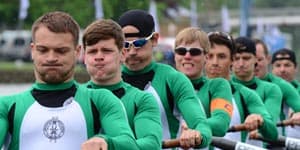The objective of this study by Garland (2005) was to determine the pacing strategies adopted by elite rowers in championships at classical 2000 m races.
 Split times were obtained for each boat in every heavyweight race of the Olympic Games in 2000 and World Championships in 2001 and 2002, and from the top 170 competitors in the British Indoor Rowing Championships in 2001 and 2002. Data were only analyzed when there was evidence that the rower or the crew tried to finish the race in fastest time possible. Of the 1612 on-water race profiles considered, 948 fitted the criteria.
Split times were obtained for each boat in every heavyweight race of the Olympic Games in 2000 and World Championships in 2001 and 2002, and from the top 170 competitors in the British Indoor Rowing Championships in 2001 and 2002. Data were only analyzed when there was evidence that the rower or the crew tried to finish the race in fastest time possible. Of the 1612 on-water race profiles considered, 948 fitted the criteria.
No differences were seen between the pacing strategies of winners and losers, and between men and women. Some variance was seen between the first 500 m splits of on-water and ergometer rowing. The rowers performed the first 500 m of the race faster than the following sectors, going at 103.3% of the average speed for the whole race, with subsequent sectors rowed at 99.0%, 98.3%, and 99.7% of average speed for on-water rowing. The corresponding 500m splits for ergometer performance were 101.5%, 99.8%, 99.0%, and 99.7%.
What to learn from this?
Fast start pacing strategies were adopted by all athletes or crews irrespective of sex or finishing position. This strategy could be considered when racing a 2000 m distance. Similar results were also found during the 2008 Olympics.

Source
Garland SW. An analysis of the pacing strategy adopted by elite competitors in 2000 m rowing. British Journal of Sports Medicine 2005; 39: 39–42.






